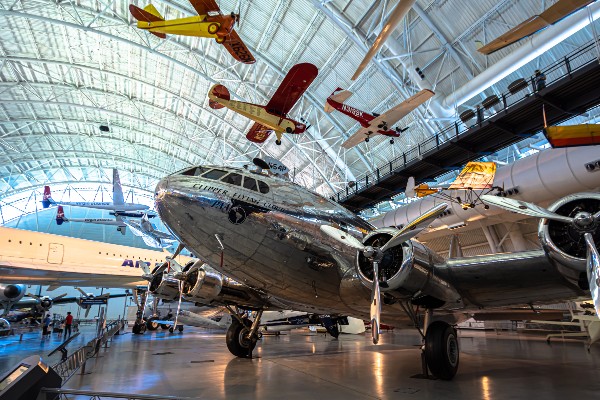We live in a connected world. Data exchange enables nearly every part of our lives. Aviation is poised to be the next industry that will be revolutionized by connectivity.
By 2028, a report from MarketsandMarkets projects the connected aircraft market to hit $16.5 billion.
And this is so much more than providing uninterrupted internet connectivity to passengers. Connected aircraft and the entire aviation ecosystem will support more reliability, efficiency, and safety in all aviation operations.
While there is a lot of excitement around connected aircraft, let’s take a moment to delve into the connected aircraft concept, the power of data for aviation, and how data will impact the entire aviation ecosystem.
What is the Connected Aircraft concept?
The Federal Aviation Administration (FAA) plans for a future where system-to-system communications — aircraft that are fully connected with the ground — support the National Airspace System (NAS).
This vision is essential to enable new aircraft types, operators, and future operations, such as remotely piloted vehicles and uncrewed aircraft systems.
Connected aircraft is one capability of the infrastructure pillar of the FAA’s Next Generation Air Transportation System foundation. The other pillars are operations and integrated safety management, with several capabilities falling under each.
The concept of connected aircraft is founded on a seamless exchange of information through digital data communications links between aircraft and ground systems to improve decision-making and operational awareness. These information exchanges from new technologies and services from airports, air traffic management, support services, airlines, and even passengers will ensure resilient, secure, and continuous data sharing with aircraft.
Understanding the Power of Data for Aviation
Connected aircraft solutions stream data points in real-time that empower data-driven decision-making. When this data is shared and analyzed, airports, airlines, and other operators can identify many opportunities to improve aviation’s reliability, security, operations, and customer experience.
The benefits of data for aviation include reliability, efficiency, and optimized operations:
- Data makes flights more reliable
When data is shared across an airline’s operational footprint, crews can identify maintenance issues before a breakdown. When real-time performance data is continuously shared with ground crews, they can develop predictive schedules and anticipate issues to cut down on troubleshooting and downtime. Pilots can also see and avoid clear-air turbulence and real-time weather, improving on-time arrivals and traveler experience. - Data makes flights more efficient
Connected aircraft enable efficiencies such as reducing fuel costs and emissions and improving operations. With real-time data accessible to management and operations, data-driven decisions can be made to realize efficiencies, such as adjusting flight schedules and air-traffic-control priority. - Data enables more optimized airport and airspace operations
When data is shared across the operational footprint, the entire system can be optimized from gate tracking, flight optimization, crew and supporting team scheduling, and more. Airports have customer data, aircraft data, and airport operational data to analyze. Passenger experience from check-in and bag drop-off to off-boarding can be enhanced based on data insights. As more aircraft take flight, connected systems will be critical for air traffic flow management.
How to Collect the Data: The Connected Aviation Ecosystem
The entire aviation ecosystem must be connected to realize the optimal state for using data to improve aviation’s reliability, safety, and efficiency. When all stakeholders in aviation, from passengers to airlines and air traffic management to airports and more, are linked with seamless data exchange, there will be billions of data points to analyze. Shedding data silos and collecting data from all sources allows analytics to be comprehensive and helps identify optimization opportunities.
It all begins with connected aircraft.
Achieving a Connected Ecosystem: How Performance Can Help
Performance has deep knowledge and experience in safety-critical aircraft software and hardware. We can develop a custom, connected aircraft solution that meets your needs and provides world-class data and wireless data loading.
- Custom Connected Aircraft Device
Performance’s EDGE 5G-X offers a significant advantage for aviation Original Equipment Manufacturers (OEMs) that are looking to accelerate the development of a connected aircraft device to support applications such as Compute at the Edge for Data Analytics, Onboard Maintenance (OMS) and Data loading, Ground Based Communications, and more. - World-class data
Precision Navigation & Mapping™ solutions deliver customizable, photo-realistic experiences with the highest precision in the industry.
- Wireless data loading
Performance DataLoader™ is a hardware-independent application that can be integrated with your system for efficient, flexible, and reliable data load.
If you’re ready to realize the benefits of connected aircraft in aviation, contact Performance today. Our team has the breadth and depth of talent and experience built over the last 25 years to become the leading full-lifecycle systems and software development firm serving safety and mission-critical industries.



